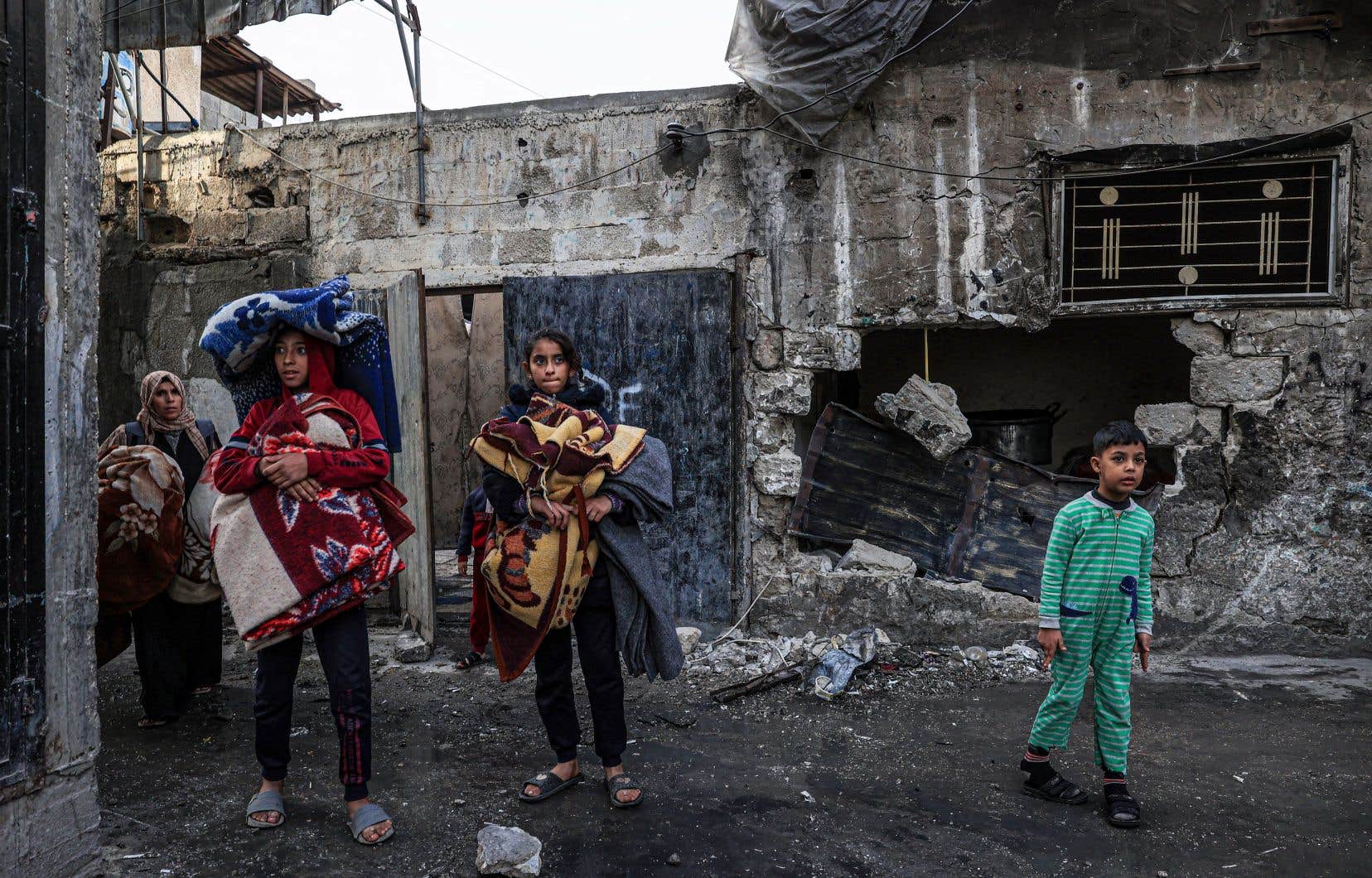The Israeli offensive in the Gaza Strip has left 20,000 dead since October 7, Hamas announced on Wednesday, at a time when the arrival in Cairo of the leader of the Islamist movement and behind-the-scenes negotiations are reviving hopes of a new truce in the besieged Palestinian territory.
Israel promised to destroy Hamas and declared war on it, in response to an unprecedented attack carried out by the Islamist movement on its soil, which left around 1,140 dead, mostly civilians, according to an AFP count. made from the latest official Israeli figures.
Around 250 people were also taken hostage on October 7, of whom 129 are still detained in Gaza, according to Israel.
Despite multiple calls to spare civilians, deadly Israeli strikes continue on the Gaza Strip, as do ground fighting, while half of the civilian population suffers from extreme or severe hunger, according to the UN.
The Hamas government announced on Wednesday that Israeli military operations had left 20,000 dead in Gaza since the start of the war, including at least 8,000 children and 6,200 women.
Negotiated by Qatar, Egypt and the United States, a seven-day pause in the war at the end of November allowed the release of 105 hostages and 240 Palestinians incarcerated in Israeli prisons, as well as the entry of aid convoys humanitarian in the small territory, subject to a total siege by Israel since October 9.
After the resumption of fighting on December 1, international pressure increased to obtain a new truce, which would allow further releases of hostages and the entry of increased humanitarian aid.
“A one-week truce”
But Israel rules out any ceasefire before the “elimination” of Hamas, in power since 2007 in Gaza and classified as a terrorist organization by the United States, the European Union and Israel.
“We continue the war until the end. It will continue until the elimination of Hamas, until victory. Those who think we are going to stop are disconnected from reality,” Prime Minister Benjamin Netanyahu repeated on Wednesday in a video released by his office.
A Hamas official speaking on condition of anonymity told AFP in Gaza that a “total ceasefire and a withdrawal of the Israeli occupation army from Gaza are a prerequisite.” to any serious negotiations for an exchange of Israeli hostages for Palestinian prisoners.
Based in Qatar, Hamas leader Ismaïl Haniyeh arrived in Egypt on Wednesday “for discussions with Egyptian officials on Zionist aggression and other issues,” Hamas announced.
These discussions relate in particular to “a temporary one-week truce in exchange for the release by Hamas of 40 Israeli prisoners, women, children and men,” a source close to Hamas told AFP.
Only civilians would be released and not soldiers during this truce “likely to be renewed”, this source specified.
Before his departure, Haniyeh met in Doha with Iranian Foreign Minister Hossein Amir Abdollahian, whose country is an ally of Hamas and an enemy of Israel.
According to a source from Islamic Jihad, another Islamist movement fighting alongside Hamas, its leader Ziad al-Nakhala will also go to Cairo early next week.
On Tuesday, Benjamin Netanyahu indicated, during a meeting with families of hostages, that he had recently sent “twice the head of Mossad [les services secrets israéliens] in Europe to promote a process of liberation.
On Wednesday, a source close to the talks told AFP that “discussions were continuing” after “a constructive meeting this week in Warsaw” between Mossad director David Barnea and Qatari Prime Minister Mohammed bin Abdelrahmane Al-Thani , and CIA Director William Burns.
“The objective is to reach an agreement on the release of the hostages […] in exchange for a truce and the possible release of [prisonniers] Palestinians,” according to this source.
Negotiations at the UN
Discussions are also due to continue on Wednesday at the UN Security Council, which since Monday has been unable to adopt a resolution intended to improve the catastrophic humanitarian situation in Gaza.
The Council is looking for the right formula to avoid a new veto from the United States, Israel’s main ally. The text, which initially called for an “urgent and lasting cessation of hostilities” in Gaza, now refers to a “suspension” of the fighting.
On Wednesday, Hamas government sources reported Israeli strikes in Rafah and Khan Yunis in the south, Deir el-Balah in the center, and Gaza City in the north, which killed at least 11 people. dead.
The Israeli army, which has lost 134 soldiers since the start of the ground offensive on October 27, reported some 300 targets struck since Tuesday, citing a raid carried out in Khan Younes on command posts where weapons were stored. and from where the Hamas fighters were firing.
In Gaza, the war has caused immense destruction, most hospitals are out of service and 1.9 million people, or 85% of the population, according to the UN, have fled their homes.
“Extreme hunger”
“We were woken up by a huge explosion,” Samar Abou Luli, a woman refugee in the Al-Chaboura camp in Rafah, told AFP. “We managed by a miracle to escape. But where to go? There is no place, no school, no mosque, no clinic, no hospital, everything is destroyed.”
At Al-Aqsa Hospital in Deir el-Balah, many injured Palestinians were receiving treatment after nighttime strikes. Three bodies were lying on the ground.
According to a report by the UN Office for the Coordination of Humanitarian Affairs (OCHA) released on Wednesday, half of Gaza’s population suffers from extreme or severe hunger, and 90% are regularly deprived of food for an entire day.
Despite the arrival of aid trucks, including a first convoy from Jordan on Wednesday, supplies are far from meeting needs.
“Without the clean water, food and sanitation that only a humanitarian ceasefire can provide, child deaths from disease could exceed those killed in bombings,” warned the Unicef.
